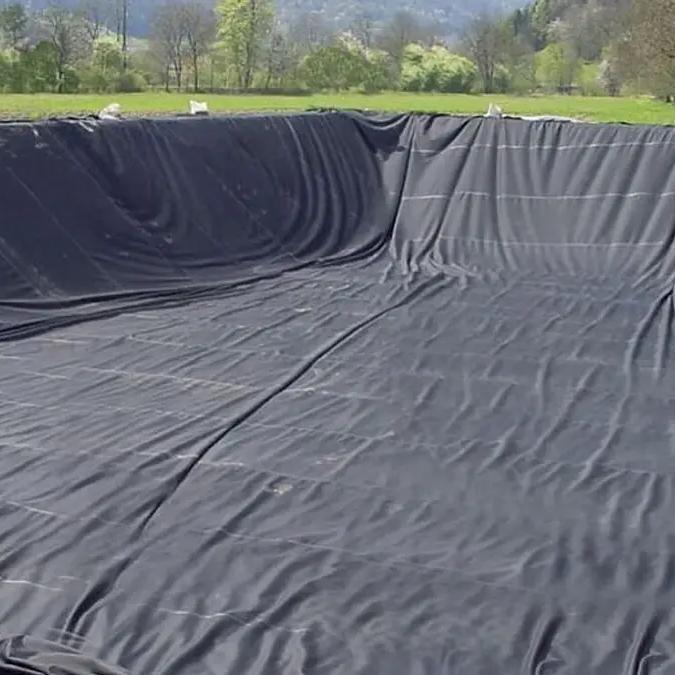Understanding Basalt Geogrid: A Revolutionary Material for Construction and Soil Stabilization
Release time:
2025-08-06
Basalt geogrid is an innovative material that has gained significant traction in the construction and civil engineering fields due to its remarkable properties and versatility. Made from basalt fibers, this geogrid offers a range of advantages over traditional materials, making it an ideal choice for various applications, especially in soil stabilization and reinforcement. One of the primary benef
Basalt geogrid is an innovative material that has gained significant traction in the construction and civil engineering fields due to its remarkable properties and versatility. Made from basalt fibers, this geogrid offers a range of advantages over traditional materials, making it an ideal choice for various applications, especially in soil stabilization and reinforcement.
One of the primary benefits of basalt geogrid lies in its superior strength-to-weight ratio. Basalt fibers are known for their exceptional tensile strength, which allows the geogrid to effectively distribute loads across a surface. This characteristic is particularly beneficial in construction projects that require stabilization of soil, as it helps prevent issues such as soil erosion and settlement. The durability of basalt geogrid also means that it can withstand harsh environmental conditions, including extreme temperatures and moisture, thus ensuring long-term performance.
Another significant advantage of basalt geogrid is its resistance to chemical corrosion. Unlike traditional polymer-based geogrids, basalt geogrid is not susceptible to degradation from chemical substances commonly found in soil, such as acids or salts. This makes it a reliable choice for various applications, including road construction, retaining walls, and foundation reinforcement. The longevity of basalt geogrid reduces the need for frequent maintenance or replacement, ultimately leading to cost savings over time.
Moreover, basalt geogrid is considered an eco-friendly alternative to synthetic materials. The production of basalt fibers involves the use of natural volcanic rock, which is abundant and sustainable. This environmentally conscious approach not only reduces the carbon footprint associated with geogrid production but also contributes to the overall sustainability goals of construction projects. By opting for basalt geogrid, professionals in the construction industry can enhance their commitment to environmentally responsible practices.
In addition to its structural benefits, basalt geogrid is also easy to install, which can significantly reduce labor costs and project timelines. Its lightweight nature allows for straightforward handling and positioning on-site, making it suitable for various construction scenarios. This ease of use does not compromise its effectiveness; instead, it enhances the efficiency of project workflows.
In conclusion, basalt geogrid represents a cutting-edge solution for modern construction and soil stabilization needs. Its impressive strength, chemical resistance, environmental benefits, and ease of installation make it an invaluable material for engineers and construction professionals. As the industry continues to evolve, basalt geogrid is set to play a pivotal role in innovative building practices and sustainable development. By understanding and utilizing this remarkable material, professionals can ensure the success and longevity of their projects while contributing to a more sustainable future.
One of the primary benefits of basalt geogrid lies in its superior strength-to-weight ratio. Basalt fibers are known for their exceptional tensile strength, which allows the geogrid to effectively distribute loads across a surface. This characteristic is particularly beneficial in construction projects that require stabilization of soil, as it helps prevent issues such as soil erosion and settlement. The durability of basalt geogrid also means that it can withstand harsh environmental conditions, including extreme temperatures and moisture, thus ensuring long-term performance.
Another significant advantage of basalt geogrid is its resistance to chemical corrosion. Unlike traditional polymer-based geogrids, basalt geogrid is not susceptible to degradation from chemical substances commonly found in soil, such as acids or salts. This makes it a reliable choice for various applications, including road construction, retaining walls, and foundation reinforcement. The longevity of basalt geogrid reduces the need for frequent maintenance or replacement, ultimately leading to cost savings over time.
Moreover, basalt geogrid is considered an eco-friendly alternative to synthetic materials. The production of basalt fibers involves the use of natural volcanic rock, which is abundant and sustainable. This environmentally conscious approach not only reduces the carbon footprint associated with geogrid production but also contributes to the overall sustainability goals of construction projects. By opting for basalt geogrid, professionals in the construction industry can enhance their commitment to environmentally responsible practices.
In addition to its structural benefits, basalt geogrid is also easy to install, which can significantly reduce labor costs and project timelines. Its lightweight nature allows for straightforward handling and positioning on-site, making it suitable for various construction scenarios. This ease of use does not compromise its effectiveness; instead, it enhances the efficiency of project workflows.
In conclusion, basalt geogrid represents a cutting-edge solution for modern construction and soil stabilization needs. Its impressive strength, chemical resistance, environmental benefits, and ease of installation make it an invaluable material for engineers and construction professionals. As the industry continues to evolve, basalt geogrid is set to play a pivotal role in innovative building practices and sustainable development. By understanding and utilizing this remarkable material, professionals can ensure the success and longevity of their projects while contributing to a more sustainable future.
Previous Page
Next Page





